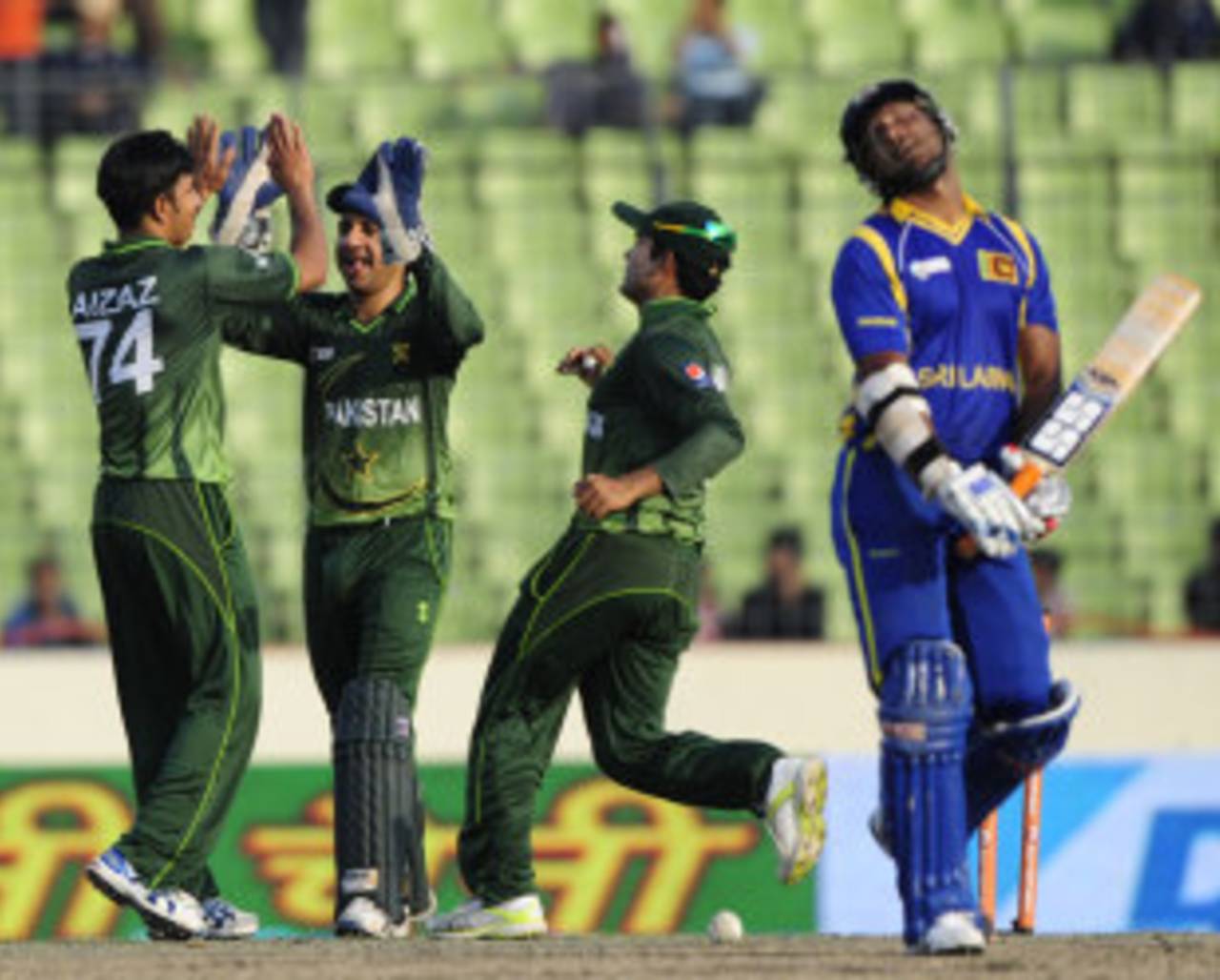How often has an away team arrived for a series earlier than the home side? Even as Sri Lanka began their second match of the Asia Cup, England's first warm-up game was underway in Colombo. The warped international schedule has already prompted Sri Lanka to rest some of their Test bowlers for this tournament, to allow them to recover for the England series.
To compound their problems were the injuries to allrounders Angelo Mathews and Thisara Perera. It left Sri Lanka utterly imbalanced, and highlighted a long-standing problem for them - the lower-middle order. Not only do Mathews and Perera provide them viable bowling options, but their completely contrasting batting styles provide just what Sri Lanka have been searching for. Mathews brings the cool head and malleable game to orchestrate the latter stages of the innings, while Perera's brute force allows him to play the impact innings, as he recently showed
in Kimberley and, to a lesser extent,
in Hobart.
For a couple of years, Sri Lanka's batting had five permanent members - Upul Tharanga, Tillakaratne Dilshan, Mahela Jayawardene, Kumar Sangakkara and Mathews - and they hunted for candidates to fill the remaining two slots. Many auditions were provided, but most of the candidates fluffed them. None of Thilina Kandamby, Chamara Silva, Thilan Samaraweera and Chamara Kapugedera proved consistent enough.
During Dilshan's troubled time as captain last year, among the most heartening things was the emergence of youngsters Dinesh Chandimal and Lahiru Thirimanne as batsmen who could flourish at the international level. With them, and the pair of Mathews and Perera, Sri Lanka finally seemed to have covered the blemishes in the batting.
The injuries, though, meant Sri Lanka were again looking for two lower-middle order players. In the absence of other allrounders, Sri Lanka deployed Tharanga at No. 6, an unfamiliar position where he has done a decent job, with three half-centuries in four matches though he is yet to convince as a finisher.
The other spot remained. With Dilshan doing a stellar job with the ball towards the end of the Commonwealth Bank series, Sri Lanka trusted him to deliver in the Asia Cup as well, and decided to gamble in the first match by using specialist batsman Chamara Kapugedera at No. 7. That left them with exactly five bowlers (including Dilshan) and no room to manoeuvre if any of them had an off day. The tactic backfired quite spectacularly, with Sri Lanka turning to Kapugedera's rarely used medium-pacers to try and rein in a free-scoring India. And worse, when it was his turn to bat, with Sri Lanka in the sort of situation they picked the extra batsman for - needing about eight an over for the final 12 - Kapugedera picked up a golden duck.
That prompted Sri Lanka to go in for the extra bowling option against Pakistan, dropping Kapugedera and pushing Farveez Maharoof to No. 7. While Maharoof using to be quite a handy bat earlier in his career, his batting has regressed in recent times and No. 7 is at least a position too high for him. Players from all four teams have said during this tournament that batting becomes easier under lights, but Sri Lanka's decision to go with the additional bowling option also meant they were likely to bat first on winning the toss.
Sri Lanka's biggest mistake in the game may have been the reckless top-order batting, but Sangakkara and Tharanga had dragged them back to more solid ground. Even when Tharanga fell in the 36th over, some support at the other end would have been enough for Sangakkara to lift Sri Lanka to a more competitive total. Instead, with the wickets tumbling at the other end, Sangakkara was forced to attempt some big hits and was dismissed in the 43rd over, and Sri Lanka in the 46th.
One-hundred-and-eighty-eight proved too small a total for their bowlers to defend, virtually ending Sri Lanka's Asia Cup campaign.
After the spirit and verve Sri Lanka showed in the CB series, these were a couple of flat performances in Mirpur. When your first chance to train is an hour before your first game of the tournament, and when key players need rest or are injured, you are bound to trip up in a compressed event like the Asia Cup where there are few chances for a comeback.
At least the players have the consolation of having finally
been paid their outstanding salaries.
Edited by Dustin Silgardo
Siddarth Ravindran is a senior sub-editor at ESPNcricinfo
